Annelid antics: How Worms made an art of refining a timeless genre
For 25 years, Team17’s warmongering invertebrates have battled on computers, consoles, and phones around the world

Fwoosh! The unmistakable sound of a bazooka launch rings out from the TV's speakers. "Oh no!" says the player who fired the shot, as the force of wind turns it back towards their own Worm. Boom! The missile narrowly misses the Worm but takes out the ground beneath it, sending it plunging into the briny depths below.
"Stupid!" rings out of the TV in a high-pitched voice, but one now drowned out by the laughter of the players in the room. Ever since Andy Davidson designed the Amiga original 25 years ago, Worms has enabled chaotic scenes like this in living rooms and bedrooms across the world, joining an elite list that have endured over such a long time.
Since its inception, Worms has evolved in all sorts of ways. For Team17, it morphed from a surprise hit into the company's key franchise – and for a time, the entire focus of its development output. As a game, it has developed through 3D and back to 2D, with new weapons and features constantly rotating in and out. For its community, it has gone from a casual, knockabout multiplayer experience to a tense and nuanced game with recognised strategies and player-created game schemes.
Perhaps most impressively of all, it has gone from being an excellent spin on the artillery strategy genre to being the most recognised game of its kind. Over the course of this feature, we'll break down the characteristics that have made Worms such a long-running success, and see how they've evolved over time.
Artillery evolved
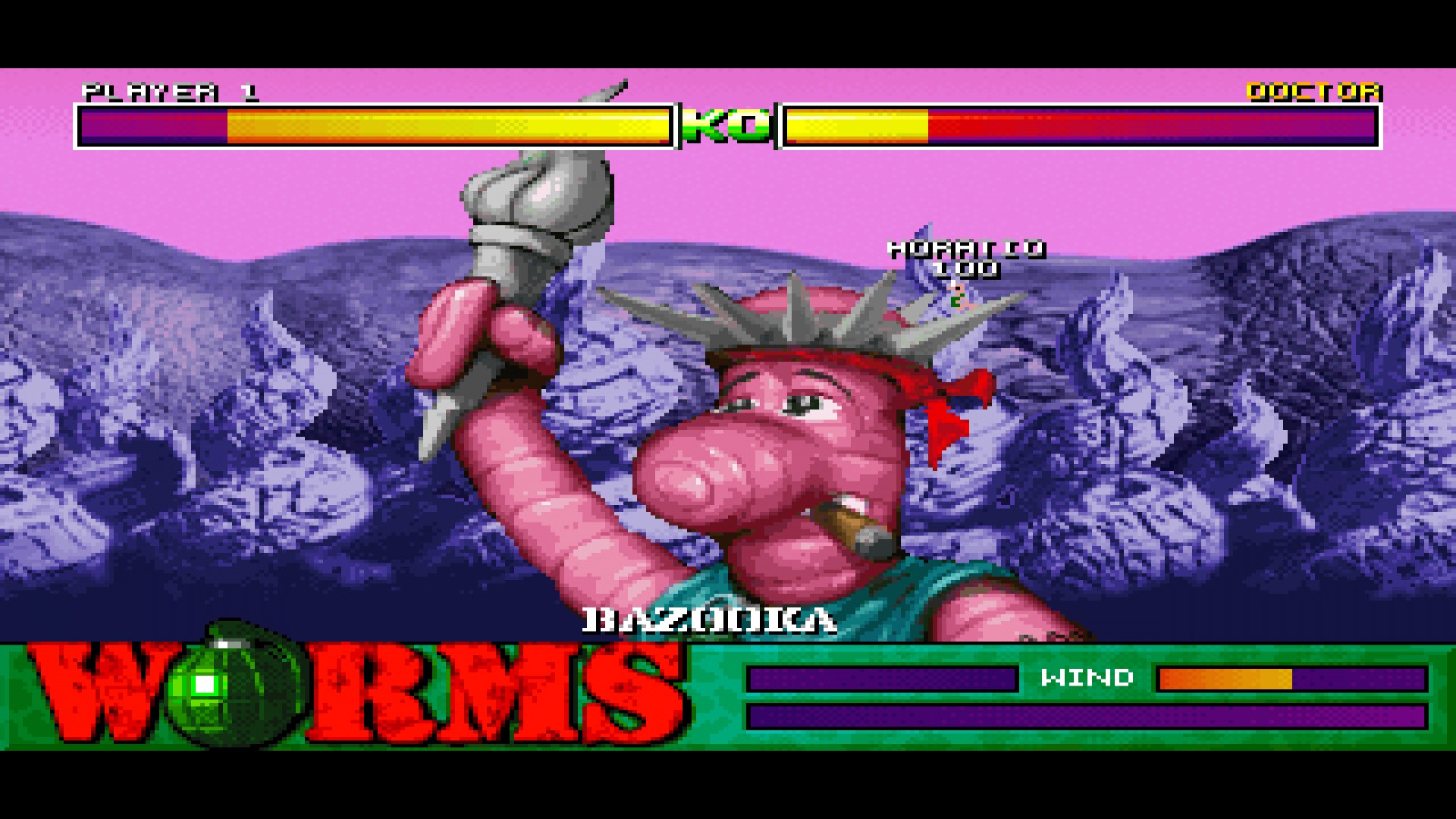

If you want in-depth features on classic video games delivered straight to your doorstop, subscribe to Retro Gamer today.
The core of Worms' gameplay was not something new – artillery strategy games like Tanx and Scorched Tanks were a staple of the Amiga's public domain scene. Like those games, Worms offered players the chance to take part in turn-based combat, firing long-range weapons by adjusting trajectory and power, as well as factoring in terrain and wind. Since those games had been popular with players, particularly as multiplayer experiences, it's no surprise that Worms attracted the same kind of popularity. However, simply adopting a popular game design well doesn't explain how Worms went on to become a cross-platform success of a different scale.
"I think Worms' big innovation was bringing platforming to that genre. Up until then, I think most artillery games were fixed – I think in Scorched Tanks you could teleport, maybe," says Kevin Carthew, creative director at Team17. "You could move around very slowly," interjects Colin Surridge, senior programmer. "But it wasn't like Worms," says Kevin. "It wasn't like where you could master something like the Ninja Rope, or eke a little bit of extra movement time out of the Parachute."
Indeed, there's plenty of room to become great at Worms. A good player might consistently throw Grenades accurately, but a great Worms player can Ninja Rope their way across the whole map to deliver a humiliating death by poke. Of course, that creates some tension.
Weekly digests, tales from the communities you love, and more
"Worms, when it first launched, was seen as this post-pub casual game, before we had labels for games like 'casual games' and things like that," says Kevin. "If you compare Worms to a casual game of today, it's anything but. You've got quite a complex character with a complex moveset, with a big weapon arsenal, that can do lots and lots of different things."

To retain the accessibility needed for a good multiplayer game, additions have to be carefully considered. "Buildings don't really need any introduction," says Kevin of the Worms WMD feature. "You walk up to one, as soon as you go inside the front of it pops off and you're hidden on the inside. There's no extra complexity, no controls to teach."
What has changed more often has been the way the formula has been applied – we've seen the 3D entries in the series that require additional dimensional calculations, the motion controls of Worms: A Space Oddity, and the introduction of a class system in Worms Revolution. Not all of these have stuck about, but they have been crucial in ensuring that the series continues to offer fresh experiences. That's especially important as there are few competitors in the artillery strategy genre, and it's fair to say that all of them exist in the shadow of Team17's wriggly warmongers.
Adding a bit of character went a long way towards making Worms the global success that it is today. Much like another Amiga hit, Lemmings, Worms was an exercise in squeezing as much personality as possible out of characters that were just eight pixels tall, expressed as they flip through the air in explosions or turn to face the player before detonating themselves. Crates could occasionally contain Sheep or Banana Bombs, and in the CD versions, rounds were punctuated with FMV skits of Worms accidentally missing teleports or unexpectedly meeting a flamethrower-wielding enemy.
Having seen success with comedy, Team17 went all-in for the second game. The silly weapon quotient was increased, and the Worm character was overhauled with a new cartoon style. Later on, higher resolutions and 3D models helped draw out additional expressiveness. But just as it does elsewhere in life, much of the best humour in Worms comes from those unscripted moments that nobody could reasonably plan for.
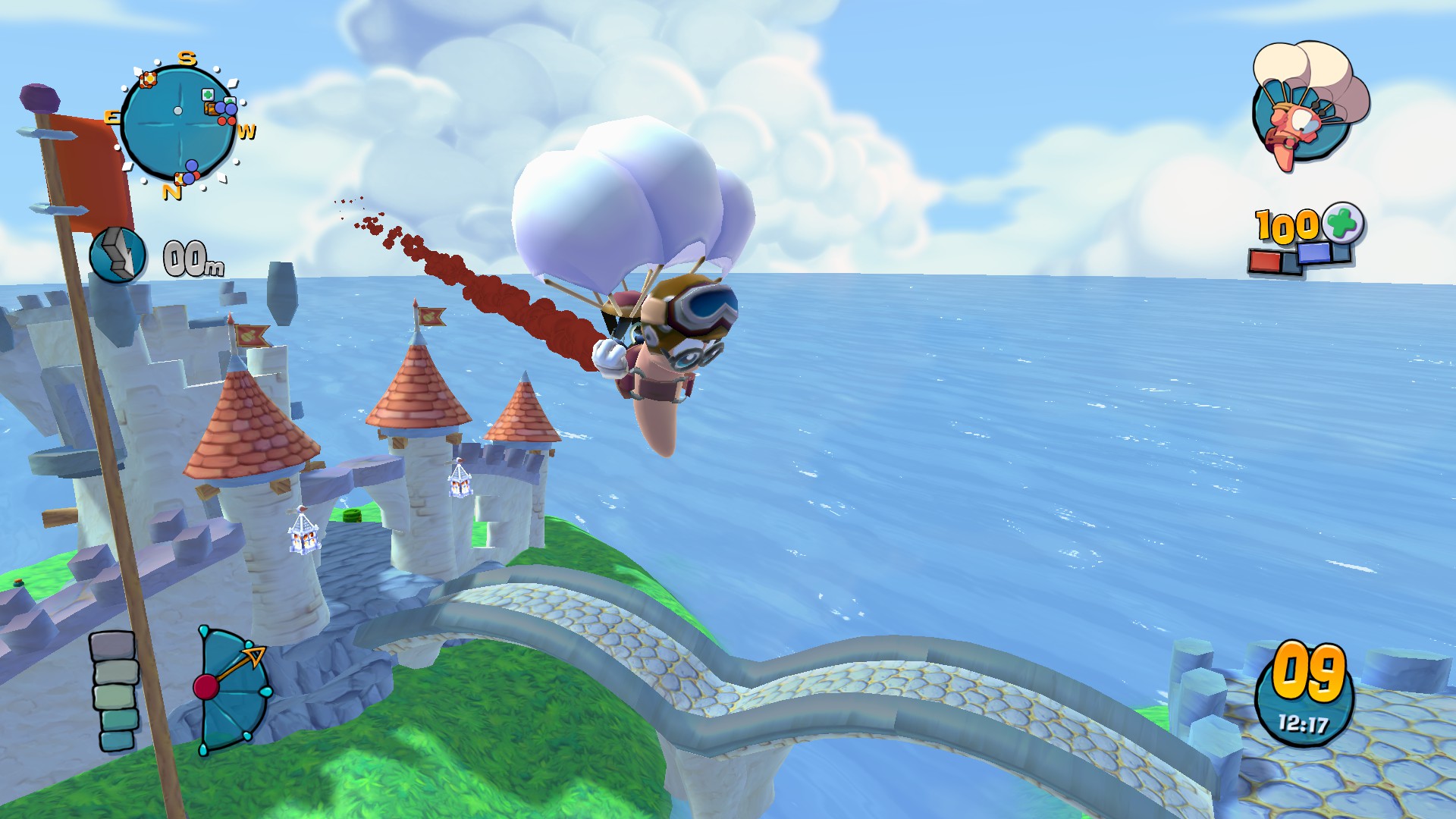
"Sometimes I think people think the comedy of the game might come from the funny things that the Worms do, which is obviously important to me as an animator," says Andy Morriss, principal animator at Team17. "But a lot of the time it's emergent from the crazy things that you're doing while trying to play the game. This is generally the thing that makes people laugh, so the Worm is really just a vehicle for those comedic situations."
This is supported by certain design choices, such as not overexplaining the weapons. "There's an element of 'try it and see what happens'," says Colin. "The comedy is there, when it explodes in your face after 30 seconds of moving carefully around the landscape," agrees Andy. "We had weapons that could do as much harm to you as they could your opponents, there was a bit of luck, like Mail Strike – you never quite knew where [the letters] were going to land," Colin continues.
There's definitely some intent to the comedy though, as evidenced by the topical references sprinkled throughout the series. "We had an Indian Nuclear Strike around the same time that it was in the news that India was becoming a nuclear power, we had Flaming French Sheep Strike at the time when the French were burning our sheep, and stuff like that," remembers Colin. "There's a lot of puns, and a lot of stuff we did that we probably couldn't do today." Often though, it's simple silliness that goes a long way. "I don't know where it came from, I don't even know what the joke is, but the Inflatable Scouser from the 3D games," says Kevin. "Like, why? Why did we do that?" We may never know, but it's right at home in the Worms universe.
Expansive arsenal
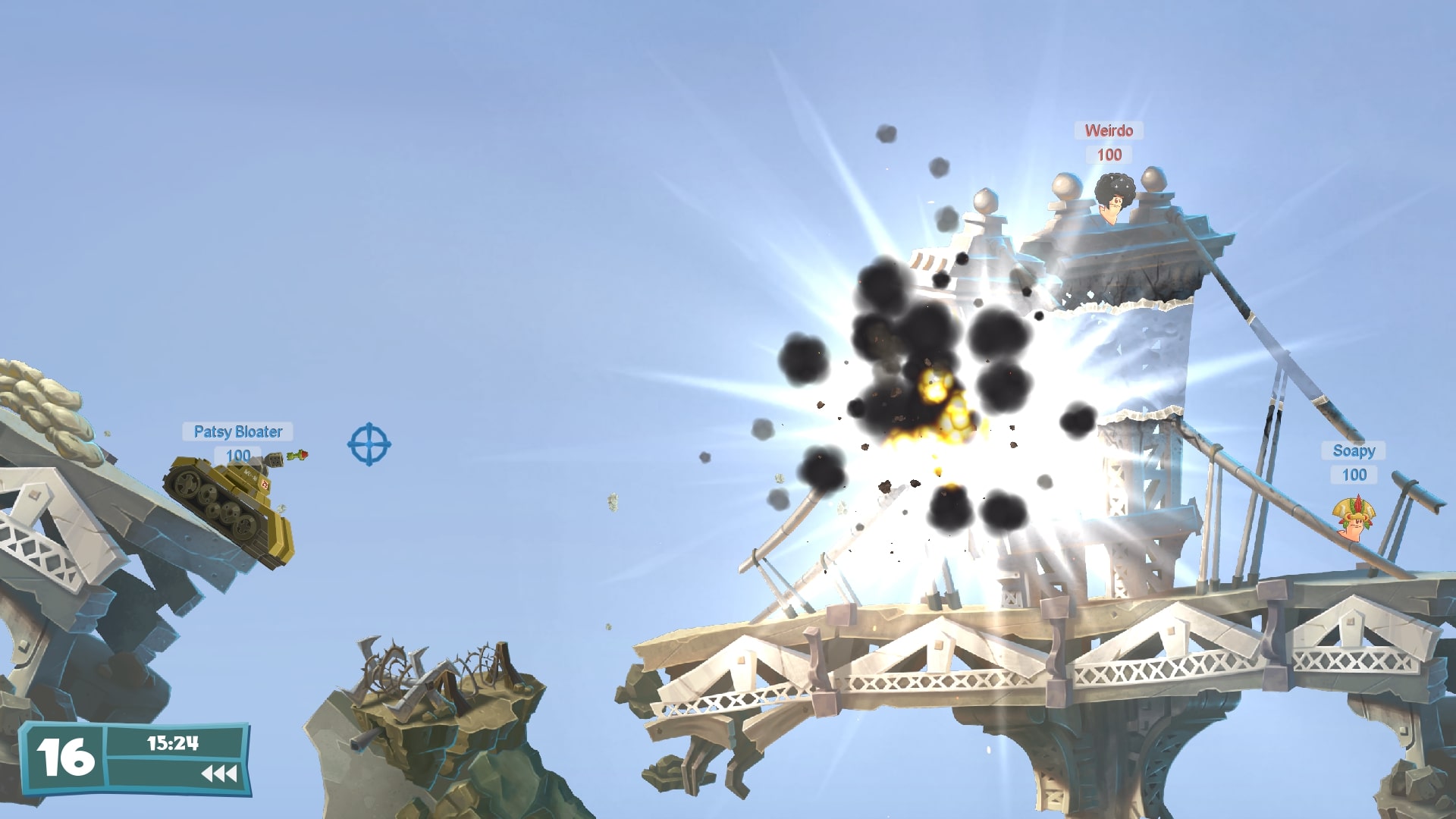
One of the big distinguishing features of Worms early on was its variety of weapons and utilities – which were mostly pretty conventional in that first game. "That core weapon set honestly hasn't changed an awful lot throughout the years, and we've found it hard to bring either weapons or utilities to move the strategy away from Bazooka, Grenade, Blowtorch, some sort of movement utility like a Girder or a Ninja Rope – finding things that really stick and really complement the strategy is surprisingly difficult," says Kevin.
"Once you get beyond that, it's funny things that blow up, right – you've got the Concrete Donkey, you have exploding Sheep, you have exploding Bananas, you have Holy Hand Grenades." This means that each game's weapon set must serve two purposes. "Sometimes weapons begin life as, 'What's going to be funny? What fits the theme of the game? What fits within the Worms universe?' And sometimes the consideration is how does it complement, or work actively against, a known strategy."
These strategies include the 'lightside' and 'darkside' alignments, with the former favouring maximum aggression and high mobility, and the latter preferring to dig into terrain and shield themselves before launching an air strike from afar. "It wasn't something we named, it kind of got named by the public," explains Colin. "The darksiding strategy, that's entirely where the Bunker Buster came from, it's where the Mole came from," adds Kevin.
Because the core strategies have remained well-defi ned for so long, when signifi cant new elements do come along, reception from the hardcore crowd can be mixed. In the Worms Revolution games, the introduction of a new physics engine allowed for new mechanics like dynamic water, which could eliminate fires and flush Worms through tight corridors. These were cool elements, but they came at a cost, as the new physics engine couldn't replicate things like the classic unrealistic Ninja Rope physics. Even Worms WMD, which took the Worms Armageddon template as its starting point, wasn't immune due to the inclusion of mech walkers, helicopters and tanks.
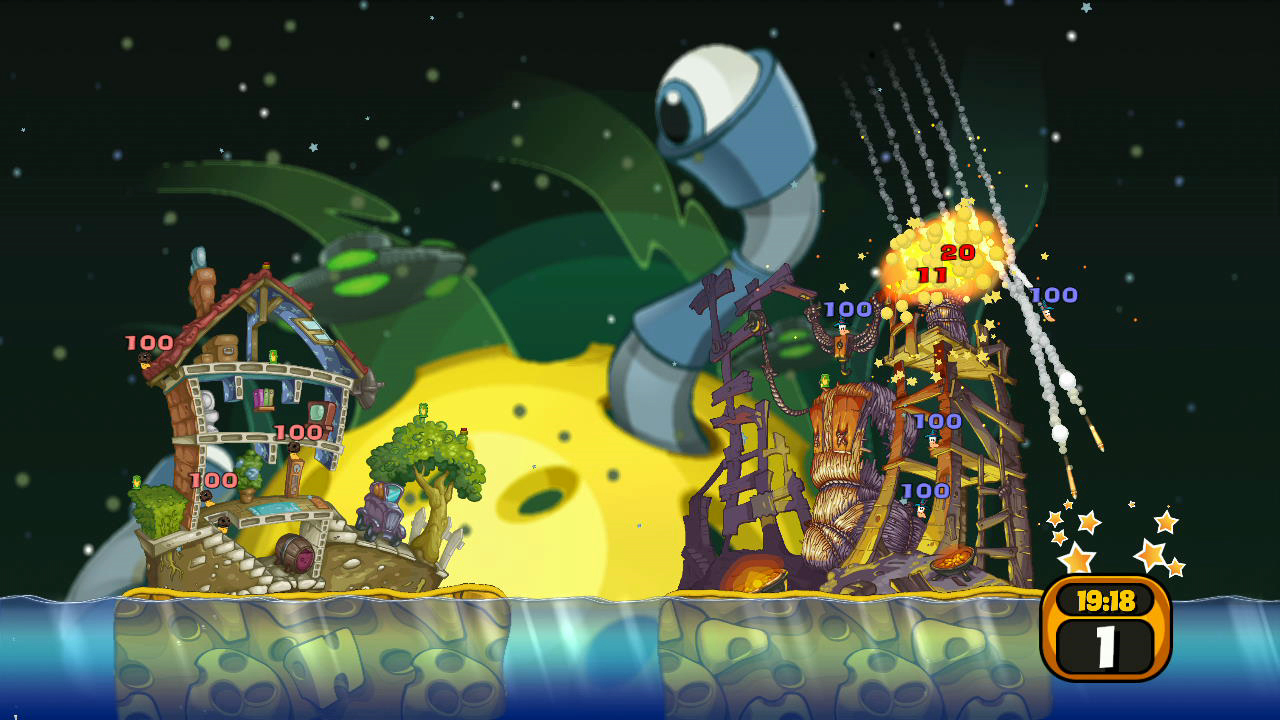
"We did get a lot of feedback that the vehicles were overpowered," explains Kevin. Arguably though, any new weaponry needs to make an impact – which is why the new inclusions tend to have fairly spectacular effects, and are often paired with the most outlandish themes. "They have to be reasonably spectacular to warrant the work to add them in the first place," says Colin. "They've got to be a bit different, and quite frankly just another type of hand grenade wouldn't be worth doing – it wouldn't be adding anything." So whenever you pick up a new Worms game, it's well worth trying the newest inclusions in the armoury – you'll probably do a lot of damage, or at least make a giant fool of yourself.
One of the brilliant things about Worms is that the characters never really feel out of place in a particular location, meaning that the series has had a great scope for interesting stage design right from the start, when combatants visited forests, frozen wastes and even Hell – and then blew all of them to smithereens. In those early days, random terrain generation was sufficient, but as more structured single-player challenges were introduced in the second generation of Worms games, fixed level designs became necessary.
"If you go back to Worms 2 and Worms Armageddon, we would have full landscape size, hand-authored, beautiful images," remembers Kevin. "Sometimes we would get the image and say, 'Right, we'll make a level out of this,' and build some single-player content out of this beautiful image, or sometimes the designers would make black-and-white masks that looked like nothing, but would play in a very specific way. That would be hell for the artists, because we'd have to say, 'Make this abstract shit that I've drawn represent something.'"
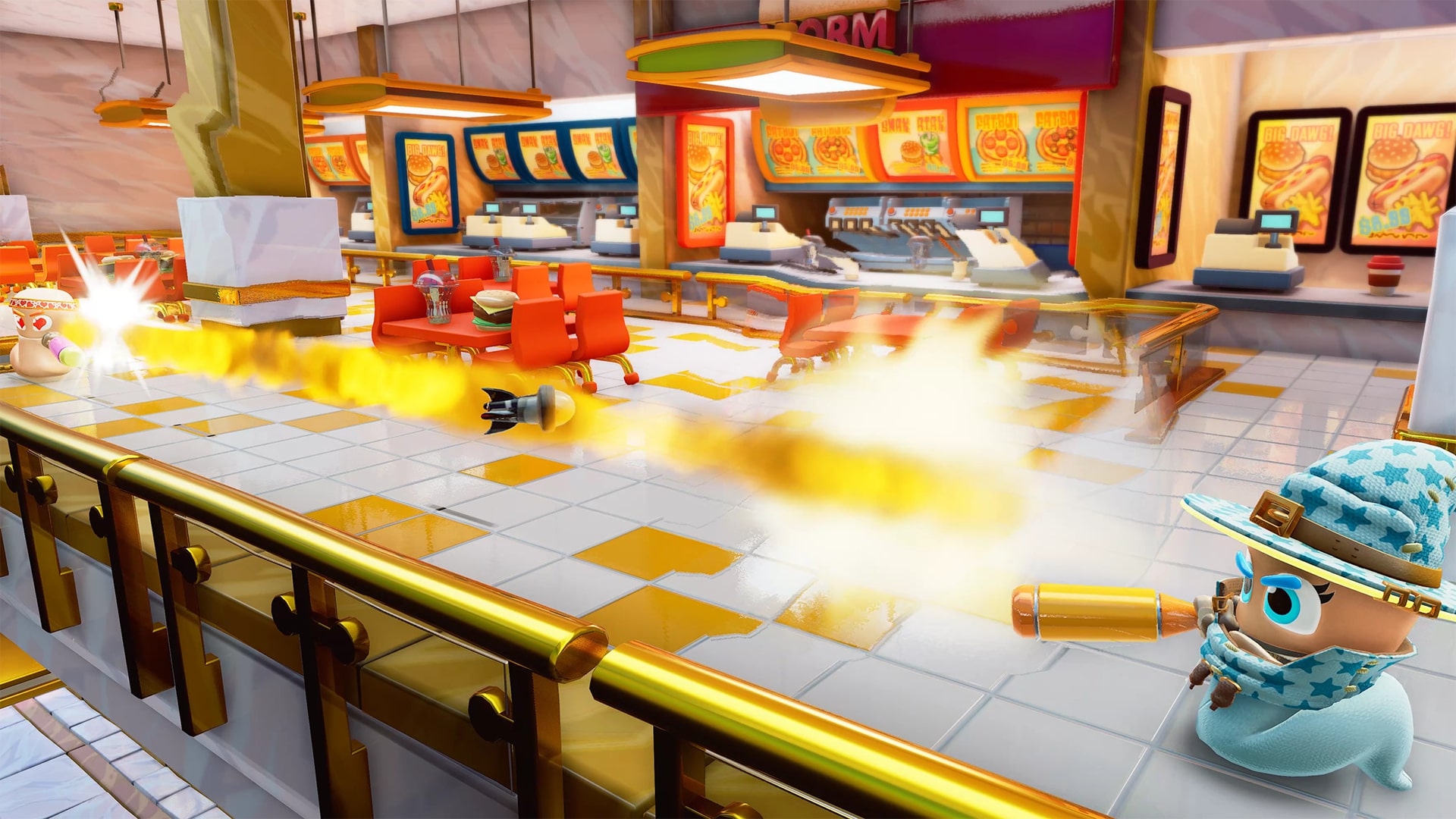
As it happens, that tension between carefully designed stages and random generation persisted for well over a decade, until Worms WMD managed to hit a sweet spot between detailed pre-drawn assets and random stage elements.
"It was a bit of a shot in the dark and it was a bit of a brave move as well, because the system for randomly generating the landscapes had been, by and large, the same ever since the first Worms game," says Kevin. "With Worms WMD we were proposing to change all that, which to producers sounds like madness because why would you fi x something that ain't broken? It's a big risk you're adding to the project. But we really wanted to get away from the landscapes looking like this big squiggly blob thing with a repeating texture, and then you plonk some objects down on top of it and Bob's your uncle. We wanted the game to be eye-catching and stand out."
"We ended up creating bespoke, individual little land components that could fit together nicely," says Nick Gomersall, art director at Team17. "The aim was always to make it look like a beautiful picture, like every single rendition of the landscape was bespoke almost." Of course, this increases the burden on the art team. "It was a lot of artwork. We changed it as we went through and did the different themes – the very first theme was something like 40 different pieces. By the end of it, we got really quick at making them, all credit to the artists that worked on the project." Not only did this create a striking new look, but allowed the stage designers to make more use of random generation.
Eager recruits
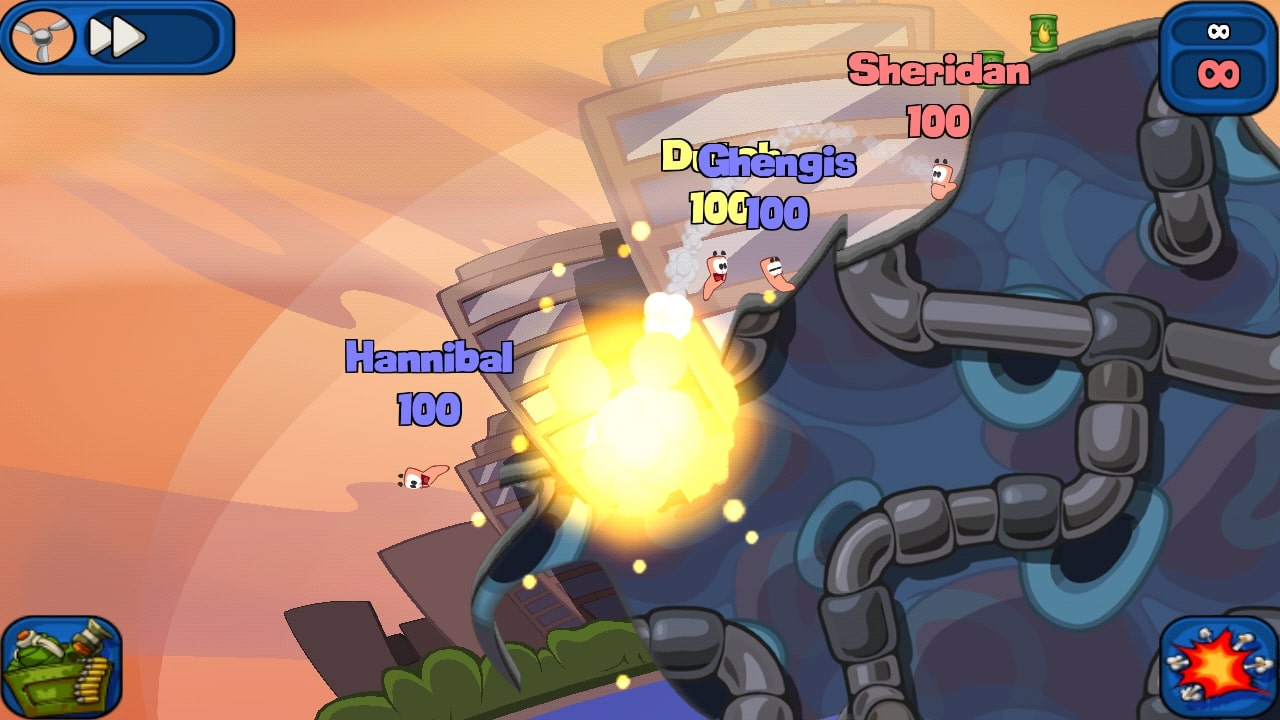
"It always blows my mind a little bit that this thing we make in Yorkshire exports all around the world."
Kevin Carthew
While the players are ultimately the lifeblood of any game, it's always much more evident with multiplayer games – and Worms does have an incredible reach, with millions of players having experienced the series in one form or another. As well as being a mainstay of traditional computer and console formats, Team17 has been able to expand the Worms audience by being quick to embrace emerging digital markets, with the series experiencing success when it hit Xbox Live Arcade, iOS and even Facebook.
"We were number one in the Brazil iPhone charts – not just games, but all apps – at the time of the last World Cup, and the Worm was holding a big Jules Rimet trophy and we had Brazilian flags flying and things like that," says Kevin. "It always blows my mind a little bit that this thing we make in Yorkshire, which is really silly and daft, exports all around the world in the way that it does."
If you're not so invested in Worms, you may be surprised to find that the series has a particular singularly popular entry. "Worms Armageddon, hugely enduring game, built off the Worms 2 engine. Worms World Party, pretty much the same game with a few extra features," says Kevin. "But that's the game that the hardcore still play today, and they've got such an entrenched, fixed idea of what the game should be – anything that moves away from that causes ripples."
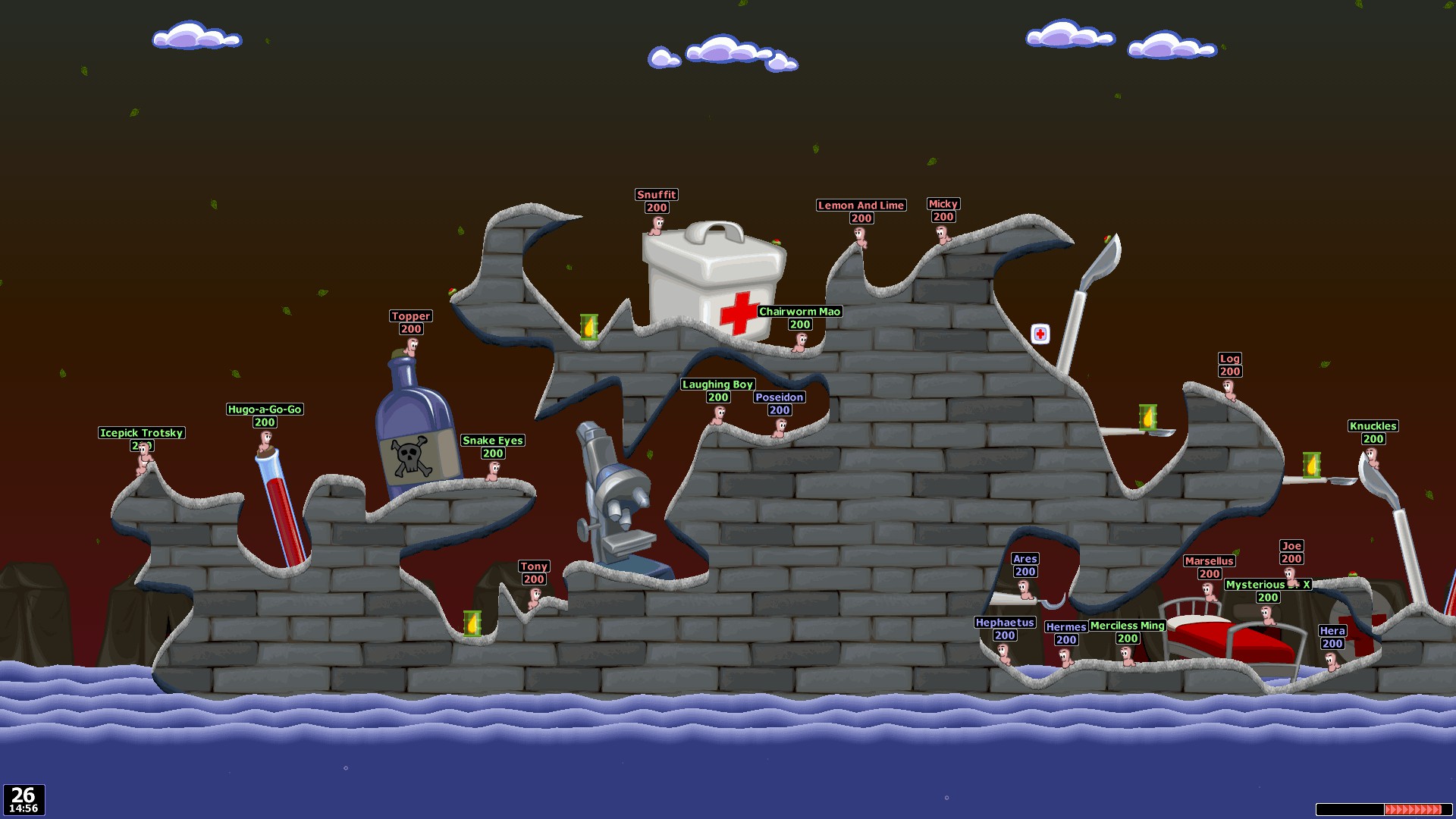
That's not to say that the community hates innovation, as players' own inventions have shaped the direction of the series. "Some Worms games have had 'rope racing' modes – rope racing was something entirely invented by the community. There has been lore created by the community, such as the 'Buffalo Of Lies', and we realised the Buffalo Of Lies as an actual weapon in the games," Kevin tells us. Of course, the community does extend beyond the vocal hardcore too, and they have different desires.
"You tend to find that players who haven't been around since the days of Worms Armageddon have a less fixed idea of how they want the strategy to play out," says Kevin. "New players, or players that have come to the game at a later generation, for example on iPhone or Xbox Live Arcade, where it felt like a more casual experience, they tend to love the new features and get on board with the new features."
As a result, Team17 can keep creating for those players that want new features, while fans of the old ways benefit from modern technology, as Worms Armageddon remains perpetually available on modern PC game storefronts and even received an official update in 2020, and Worms World Party Remastered is also on sale.
This feature first appeared in Retro Gamer magazine issue 209. For more excellent features, like the one you've just read, don't forget to subscribe to the print or digital edition at MyFavouriteMagazines.
Retro Gamer is the world's biggest - and longest-running - magazine dedicated to classic games, from ZX Spectrum, to NES and PlayStation. Relaunched in 2005, Retro Gamer has become respected within the industry as the authoritative word on classic gaming, thanks to its passionate and knowledgeable writers, with in-depth interviews of numerous acclaimed veterans, including Shigeru Miyamoto, Yu Suzuki, Peter Molyneux and Trip Hawkins.



